课程链接:http://video.jessetalk.cn/course/explore
良心课程,大家一起来学习哈!
目录
- 01-介绍K8s是什么
- 02-为什么要学习k8s
- 03-如何学习k8s
- 04-K8S集群基本概念
- 05-安装本地k8s单节点集群
- 06-K8S三大核心组件介绍
- 07-Service的三种类型及Dashboad部署
- 08-kubectl工具命令介绍
- 09-yaml部署文件格式介绍
- 10-部署netcore api到K8S
- 11-k8s高可用集群介绍
- 12-进阶介绍
01-介绍K8s是什么
Docker VS VirtualMachine
- 敏捷地应用创建和部署
- 持续开发,集成和部署
- 开发和运行相分离
- 开发,测试和生产环境的持续
- 云和操作系统版本的可移植性,可以运行在 Ubuntu, RHEL, CoreOS, on-prem, Google Container Engine,和任何其它的运行环境中。
- 松耦合,分布式,弹性,自由的微服务
- 资源隔离:可以预测的应用性能
- 资源使用:高效
Docker 容器集群
镜像 => run => 容器(运行时)
- 同一个容器在同一台Host上能部署几份?
- 如果实现在多台机器上快速部署?
- 不同容器在不同机器上如何交互?如何做负载均衡?
K8S 介绍
一个用于容器集群的自动化部署、扩容以及运维的开源平台
- 快速而有预期地部署你的应用
- 极速地扩展你的应用
- 无缝对接新的应用功能
- 节省资源,优化硬件资源的使用
02-为什么要学习k8s
通过 K8S 降低整个基础设施在架构和运维上的难度
测试环境
- 将多个API打成镜像部署到不同的节点上
- 通过 Node Port 本地可以直接连到 API 进行测试
- Mysql 与 API 可以通过 service 连接
- 一套脚本部署

生产环境
- Mysql, Redis, 消息队列使用第三方服务(腾讯云)
- 也可以通过 桥接 将内部 API 与外部服务连接
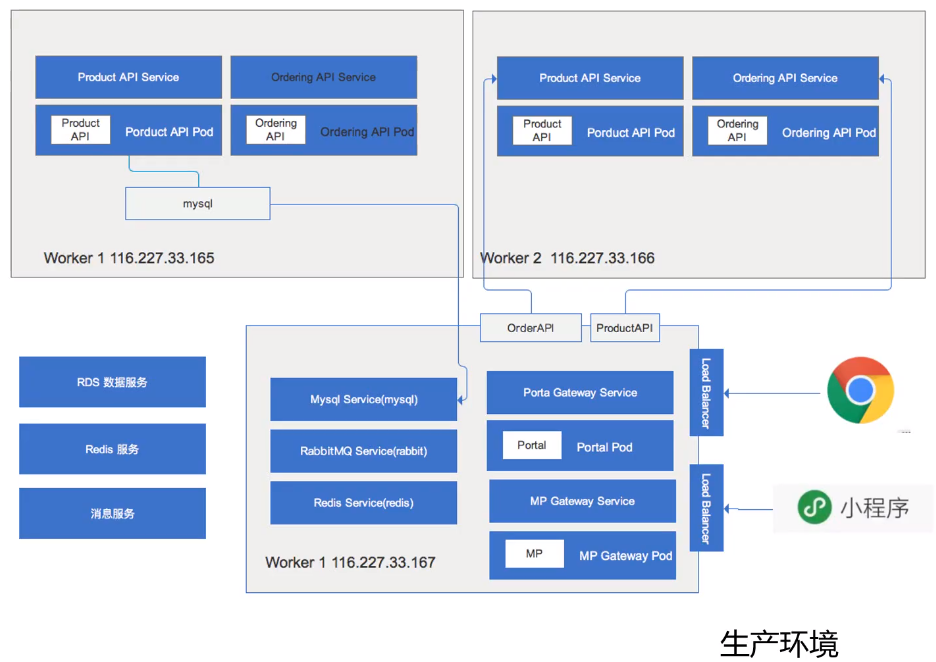
03-如何学习k8s
掌握学习的方法(刻意练习)
- 先了解全貌和整体
- 对整体结构进入拆分、梳理脉络(思维导图)
- 马上开始行动(比如本地部署一个集群)
- 在动的过程中逐步加深,每一个阶段有阶段性目标
- 及时进行回顾与复盘,与理论相结合
- 输出(学习金字塔)
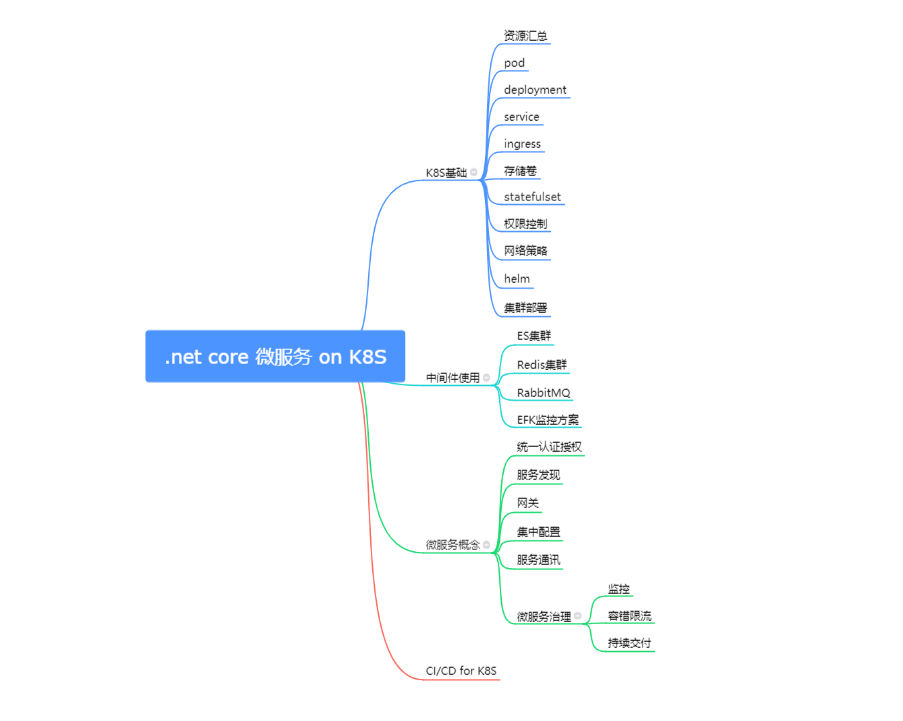
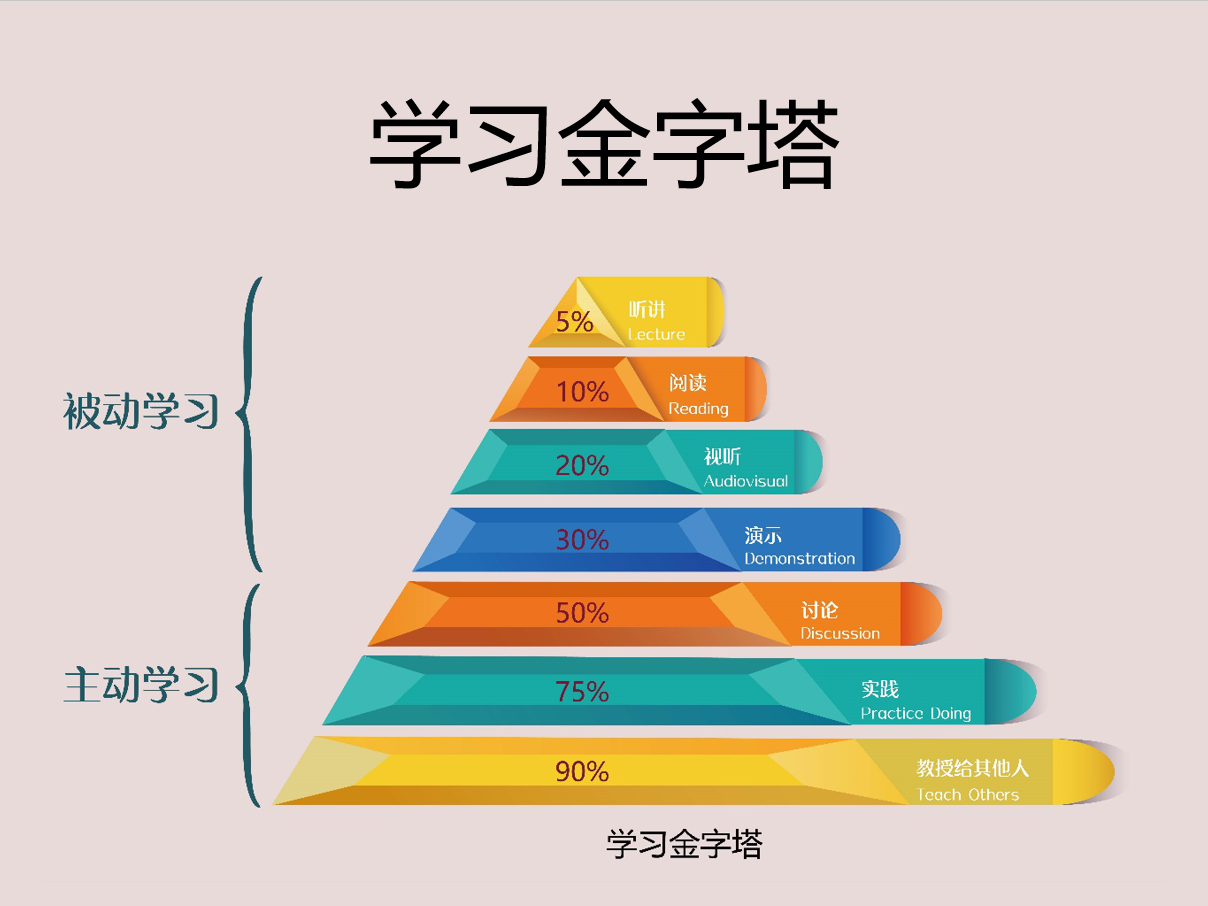
学习K8S的路径
- 了解基本概念及核心组件
- 使用本地单节点集群来学习k8s
- 用kubectl 与本地集群建立连接
- 部署服务到 k8s集群
- 对k8s服务进行扩容、更新
- 进一步学习k8s资源(pod, deployment, service, statefulset, ingress…)
- 设计微服务
- 搭建k8s集群或者使用云服务商的k8s服务
- 添加持续集成、日志搜集、监控和指标度量、跟踪
04-K8S集群基本概念
Agenda
- K8S集群基本概念
- 本地搭建k8s单节点集群
- POD & Service & Deployment
- Service 的三种类型
- Yaml 部署文件语法初体验
- 初始化一个.NET Core API 并push到docker hub
- 把.Net Core API 部署到 K8s
- K8S集群高级概念
K8S集群基本概念
- 集群(多个机器拼在一起,共同处理)
- Node (Master:维护集群状态 and Worker:处理)(高可用时架构不同)
- 资源(内部组件为一个资源,对外暴露 restful 的 WebApi)(例如 Yaml)
- Kubectl (本地客户端,一个命令行工具,连接到 K8S 集群)
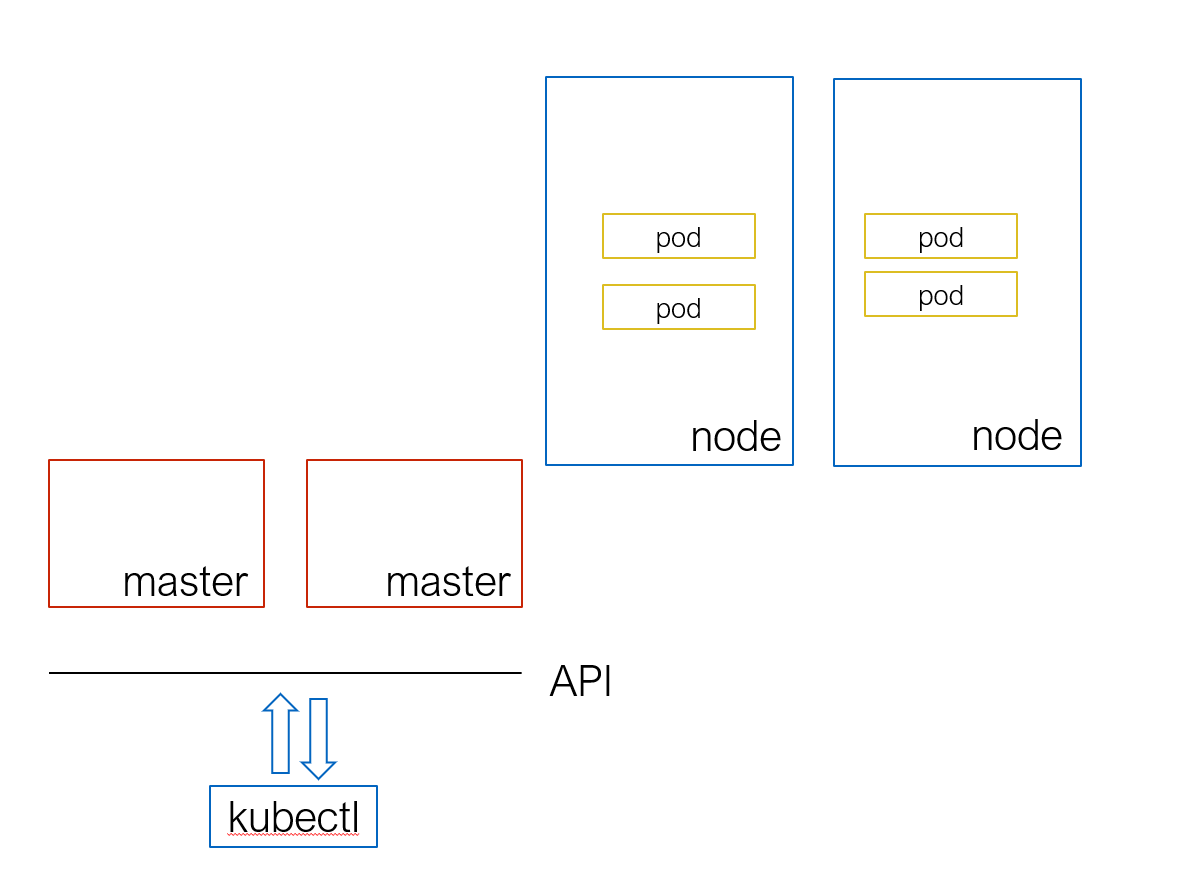
05-安装本地k8s单节点集群
安装教程
输入国内镜像地址(https://registry.docker-cn.com),才能更好的拿到谷歌开头的镜像

运行下列脚本可以从阿里云镜像服务下载Kubernetes安装所需Docker镜像,您也可以通过修改 images.properties 文件定义自己安装所需的Docker镜像
右键 git bash
git clone https://github.com/AliyunContainerService/k8s-for-docker-desktop
cd k8s-for-docker-desktop
如果您安装版本为18.09/18.06版本可以直接使用master分支;如果是18.03稳定版请使用对应的代码分支 git checkout 18.03
Windows下加载镜像(./load_images.sh)可能会报错
使用 PowerShell 执行 load_images.ps1 循环拉取 images.properties 的镜像
需要开启VPN
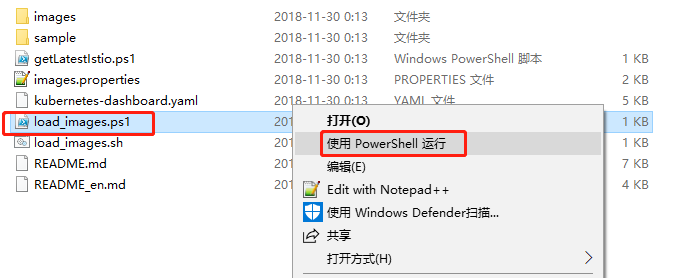
在Docker for Mac中开启 Kubernetes
勾选 Enable Kubernetes 安装,等待消息 Kubernetes is running
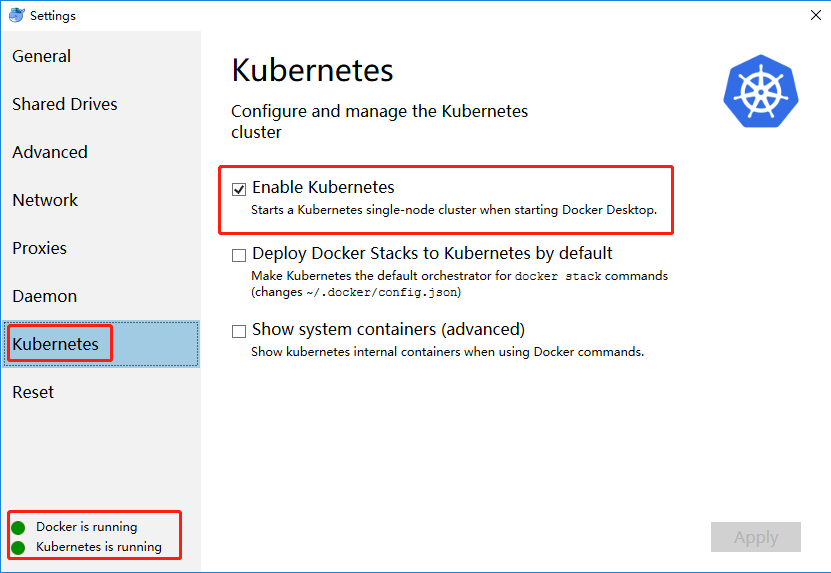
配置信息路径:C:UsersMINGSON.kube
测试 kubectl 命令,在左下角 Windows 图标右键启动 Window PowerShell(管理员)
PS C:WINDOWSsystem32> kubectl get nodes
NAME STATUS ROLES AGE VERSION
docker-for-desktop Ready master 1d v1.10.3
PS C:WINDOWSsystem32> kubectl get services
NAME TYPE CLUSTER-IP EXTERNAL-IP PORT(S) AGE
kubernetes ClusterIP 10.96.0.1 <none> 443/TCP 1d
06-K8S三大核心组件介绍
POD & Service
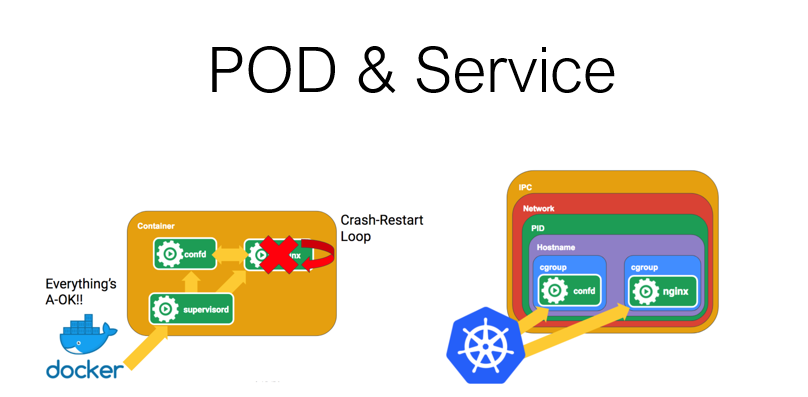
POD: K8S 运行时最小单元逻辑(类似docker里面的容器)
与容器的区别:
docker里面每个容器只有一个主进程挂载,可以使用supervisord同时让两个进程运行起来,可是docker只有一个入口,所以只能把supervisord暴露成入口,这种情况API很难进入到里面每个进程
POD里面可以运行多个容器,同时容器之间的挂载可以共享
docker映射端口后可以直接访问
POD必须挂载一个service(对外暴露POD),之后POD才可以在集群外部被访问
学习资料
deployment
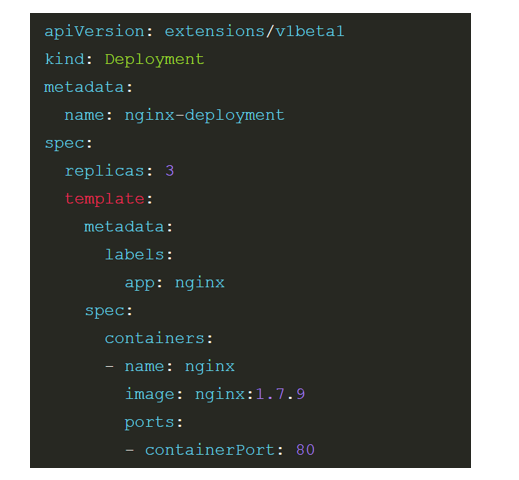
kind:声明k8s资源固定的模板
replicas:POD实例,复本
containers:容器(数组形式,可以定义多个容器)
image:镜像
一个deployment的POD里面可以运行多个容器
07-Service的三种类型及Dashboad部署
- ClusterIP
- NodePort
- LoadBalancer
学习资料
Kubernetes的三种外部访问方式:NodePort、LoadBalancer 和 Ingress
ClusterIP 服务是 Kubernetes 的默认服务。它给你一个集群内的服务,集群内的其它应用都可以访问该服务。集群外部无法访问它。
ClusterIP 服务的 YAML 文件类中 type: ClusterIP(不填写默认也是ClusterIP)
NodePort 服务是引导外部流量到你的服务的最原始方式。NodePort,正如这个名字所示,在所有节点(虚拟机)上开放一个特定端口,任何发送到该端口的流量都被转发到对应服务。
NodePort 服务的 YAML 文件类中 type: NodePort,需要指定一个端口 nodePort: 30036
NodePort 是开发环境中最常用的类型
LoadBalancer 服务是暴露服务到 internet 的标准方式。在 GKE 上,这种方式会启动一个 Network Load Balancer,它将给你一个单独的 IP 地址,转发所有流量到你的服务。
LoadBalancer 主要是云服务商使用
使用 kubectl 连接本地集群,部署 dashboard(脚本中通过 ClusterIP,需要使用代理的模式)
在左下角 Windows 图标右键启动 Window PowerShell(管理员)
PS C:WINDOWSsystem32> kubectl create -f https://raw.githubusercontent.com/kubernetes/dashboard/master/src/deploy/recommended/kubernetes-dashboard.yaml
secret "kubernetes-dashboard-certs" created
serviceaccount "kubernetes-dashboard" created
role.rbac.authorization.k8s.io "kubernetes-dashboard-minimal" created
rolebinding.rbac.authorization.k8s.io "kubernetes-dashboard-minimal" created
deployment.apps "kubernetes-dashboard" created
service "kubernetes-dashboard" created
脚本中的 namespace: kube-system 是一个资源,可以通过 kubectl 命令行获取
PS C:WINDOWSsystem32> kubectl get namespace
NAME STATUS AGE
default Active 1d
docker Active 1d
kube-public Active 1d
kube-system Active 1d
PS C:WINDOWSsystem32> kubectl get deploy -n kube-system
NAME DESIRED CURRENT UP-TO-DATE AVAILABLE AGE
kube-dns 1 1 1 1 1d
kubernetes-dashboard 1 1 1 1 2m
PS C:WINDOWSsystem32> kubectl get service -n kube-system
NAME TYPE CLUSTER-IP EXTERNAL-IP PORT(S) AGE
kube-dns ClusterIP 10.96.0.10 <none> 53/UDP,53/TCP 1d
kubernetes-dashboard ClusterIP 10.106.79.145 <none> 443/TCP 2m
开启API Server的本地监听端口,之后就可以打开控制台
PS C:WINDOWSsystem32> kubectl proxy
Starting to serve on 127.0.0.1:8001
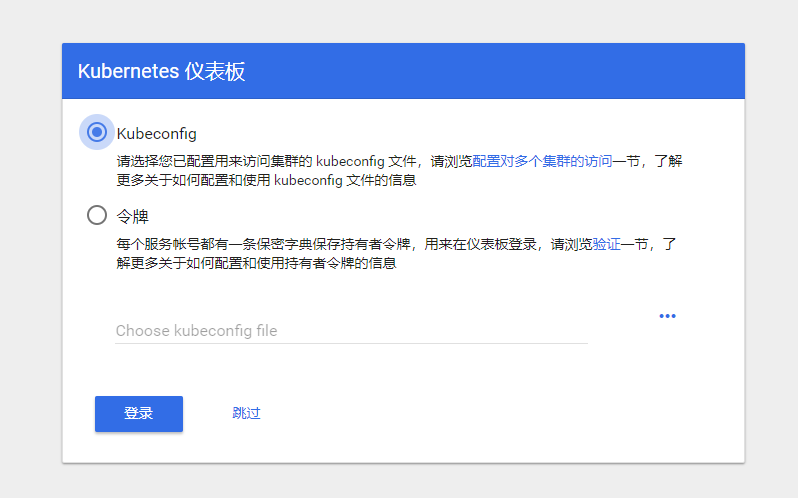
跳过
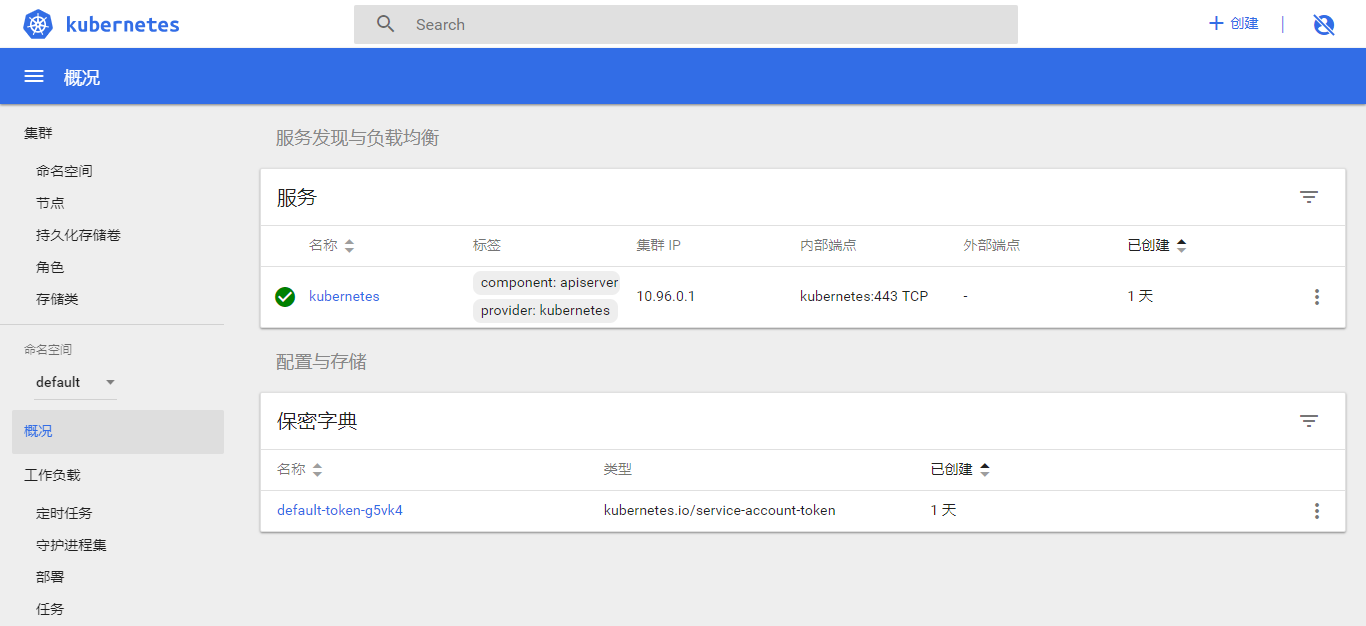
切换命名空间到 kube-system
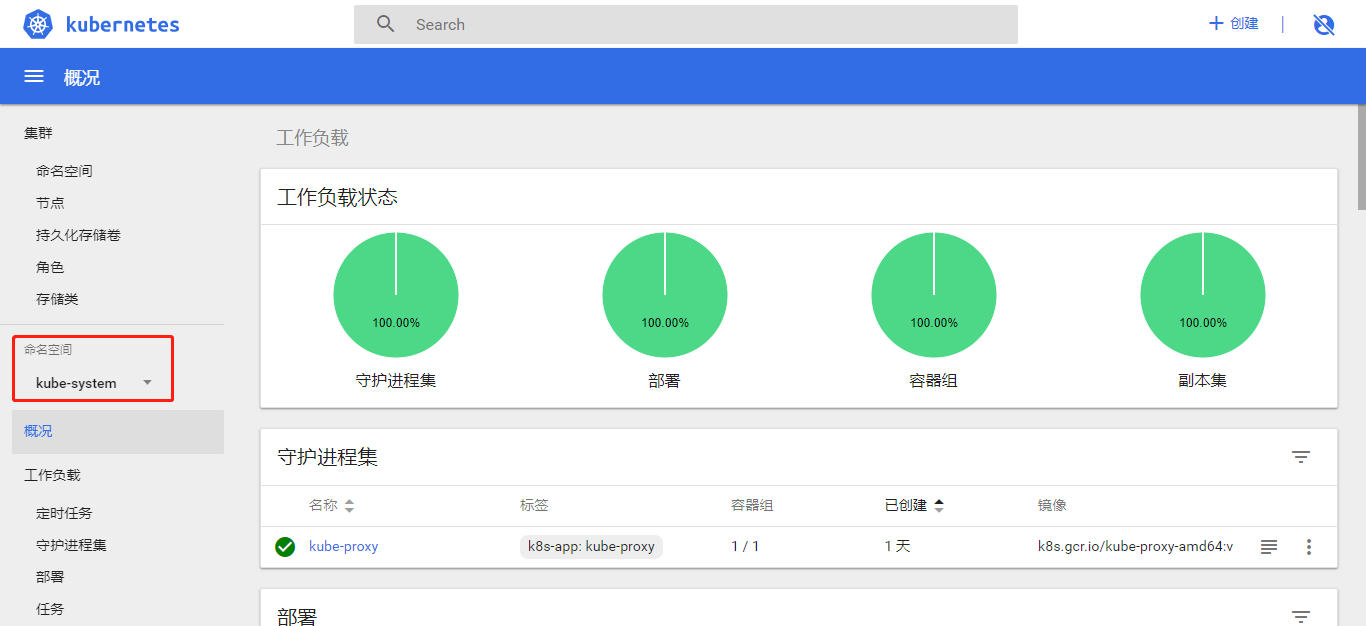
容器组里运行的 dashboard

通过 NodePort 部署
在本地新建一个文件 kubernetes-dashboard.yaml,将脚本(https://raw.githubusercontent.com/kubernetes/dashboard/master/src/deploy/recommended/kubernetes-dashboard.yaml)内容保存到本地文件 kubernetes-dashboard.yaml
添加 type: NodePort,nodePort: 30065(端口必须在30000-32767)
# ------------------- Dashboard Service ------------------- #
kind: Service
apiVersion: v1
metadata:
labels:
k8s-app: kubernetes-dashboard
name: kubernetes-dashboard
namespace: kube-system
spec:
type: NodePort
ports:
- port: 443
targetPort: 8443
nodePort: 30065
selector:
k8s-app: kubernetes-dashboard
删除上面部署的 deploy
PS C:WINDOWSsystem32> kubectl get deploy -n kube-system
NAME DESIRED CURRENT UP-TO-DATE AVAILABLE AGE
kube-dns 1 1 1 1 1d
kubernetes-dashboard 1 1 1 1 52m
PS C:WINDOWSsystem32> kubectl delete deploy kubernetes-dashboard -n kube-system
deployment.extensions "kubernetes-dashboard" deleted
删除服务,使用缩写svc
PS C:WINDOWSsystem32> kubectl get svc -n kube-system
NAME TYPE CLUSTER-IP EXTERNAL-IP PORT(S) AGE
kube-dns ClusterIP 10.96.0.10 <none> 53/UDP,53/TCP 1d
kubernetes-dashboard ClusterIP 10.106.79.145 <none> 443/TCP 53m
PS C:WINDOWSsystem32> kubectl delete svc kubernetes-dashboard -n kube-system
service "kubernetes-dashboard" deleted
再次启动代理
PS C:WINDOWSsystem32> kubectl proxy
Starting to serve on 127.0.0.1:8001
无法访问

切换到文件所在目录部署deploy
PS D:jessetalkk8s> kubectl create -f .kubernetes-dashboard.yaml
service "kubernetes-dashboard" created
Error from server (AlreadyExists): error when creating ".\kubernetes-dashboard.yaml": secrets "kubernetes-dashboard-certs" already exists
Error from server (AlreadyExists): error when creating ".\kubernetes-dashboard.yaml": serviceaccounts "kubernetes-dashboard" already exists
Error from server (AlreadyExists): error when creating ".\kubernetes-dashboard.yaml": roles.rbac.authorization.k8s.io "kubernetes-dashboard-minimal" already exists
Error from server (AlreadyExists): error when creating ".\kubernetes-dashboard.yaml": rolebindings.rbac.authorization.k8s.io "kubernetes-dashboard-minimal" already exists
Error from server (AlreadyExists): error when creating ".\kubernetes-dashboard.yaml": deployments.apps "kubernetes-dashboard" already exists
PS D:jessetalkk8s> kubectl get service -n kube-system
NAME TYPE CLUSTER-IP EXTERNAL-IP PORT(S) AGE
kube-dns ClusterIP 10.96.0.10 <none> 53/UDP,53/TCP 1d
kubernetes-dashboard NodePort 10.105.60.55 <none> 443:30065/TCP 33s
浏览器访问:https://127.0.0.1:30065/
由于 dashboard 使用 https,所以假的证书无法访问
08-kubectl工具命令介绍
Kubectl 命令详解
不同 namespace 下的资源(pod, deployment, services)是隔离的
09-yaml部署文件格式介绍
下载 k8s-demo:https://github.com/MINGSON666/k8s-demo.git
Yaml 部署文件详解

--查看解释
PS C:WINDOWSsystem32> kubectl explain deployment.metadata
KIND: Deployment
VERSION: extensions/v1beta1
RESOURCE: metadata <Object>
DESCRIPTION:
Standard object metadata.
ObjectMeta is metadata that all persisted resources must have, which
includes all objects users must create.
FIELDS:
annotations <map[string]string>
Annotations is an unstructured key value map stored with a resource that
may be set by external tools to store and retrieve arbitrary metadata. They
are not queryable and should be preserved when modifying objects. More
info: http://kubernetes.io/docs/user-guide/annotations
clusterName <string>
The name of the cluster which the object belongs to. This is used to
distinguish resources with same name and namespace in different clusters.
This field is not set anywhere right now and apiserver is going to ignore
it if set in create or update request.
creationTimestamp <string>
CreationTimestamp is a timestamp representing the server time when this
object was created. It is not guaranteed to be set in happens-before order
across separate operations. Clients may not set this value. It is
represented in RFC3339 form and is in UTC. Populated by the system.
Read-only. Null for lists. More info:
https://git.k8s.io/community/contributors/devel/api-conventions.md#metadata
deletionGracePeriodSeconds <integer>
Number of seconds allowed for this object to gracefully terminate before it
will be removed from the system. Only set when deletionTimestamp is also
set. May only be shortened. Read-only.
deletionTimestamp <string>
DeletionTimestamp is RFC 3339 date and time at which this resource will be
deleted. This field is set by the server when a graceful deletion is
requested by the user, and is not directly settable by a client. The
resource is expected to be deleted (no longer visible from resource lists,
and not reachable by name) after the time in this field, once the
finalizers list is empty. As long as the finalizers list contains items,
deletion is blocked. Once the deletionTimestamp is set, this value may not
be unset or be set further into the future, although it may be shortened or
the resource may be deleted prior to this time. For example, a user may
request that a pod is deleted in 30 seconds. The Kubelet will react by
sending a graceful termination signal to the containers in the pod. After
that 30 seconds, the Kubelet will send a hard termination signal (SIGKILL)
to the container and after cleanup, remove the pod from the API. In the
presence of network partitions, this object may still exist after this
timestamp, until an administrator or automated process can determine the
resource is fully terminated. If not set, graceful deletion of the object
has not been requested. Populated by the system when a graceful deletion is
requested. Read-only. More info:
https://git.k8s.io/community/contributors/devel/api-conventions.md#metadata
finalizers <[]string>
Must be empty before the object is deleted from the registry. Each entry is
an identifier for the responsible component that will remove the entry from
the list. If the deletionTimestamp of the object is non-nil, entries in
this list can only be removed.
generateName <string>
GenerateName is an optional prefix, used by the server, to generate a
unique name ONLY IF the Name field has not been provided. If this field is
used, the name returned to the client will be different than the name
passed. This value will also be combined with a unique suffix. The provided
value has the same validation rules as the Name field, and may be truncated
by the length of the suffix required to make the value unique on the
server. If this field is specified and the generated name exists, the
server will NOT return a 409 - instead, it will either return 201 Created
or 500 with Reason ServerTimeout indicating a unique name could not be
found in the time allotted, and the client should retry (optionally after
the time indicated in the Retry-After header). Applied only if Name is not
specified. More info:
https://git.k8s.io/community/contributors/devel/api-conventions.md#idempotency
generation <integer>
A sequence number representing a specific generation of the desired state.
Populated by the system. Read-only.
initializers <Object>
An initializer is a controller which enforces some system invariant at
object creation time. This field is a list of initializers that have not
yet acted on this object. If nil or empty, this object has been completely
initialized. Otherwise, the object is considered uninitialized and is
hidden (in list/watch and get calls) from clients that haven't explicitly
asked to observe uninitialized objects. When an object is created, the
system will populate this list with the current set of initializers. Only
privileged users may set or modify this list. Once it is empty, it may not
be modified further by any user.
labels <map[string]string>
Map of string keys and values that can be used to organize and categorize
(scope and select) objects. May match selectors of replication controllers
and services. More info: http://kubernetes.io/docs/user-guide/labels
name <string>
Name must be unique within a namespace. Is required when creating
resources, although some resources may allow a client to request the
generation of an appropriate name automatically. Name is primarily intended
for creation idempotence and configuration definition. Cannot be updated.
More info: http://kubernetes.io/docs/user-guide/identifiers#names
namespace <string>
Namespace defines the space within each name must be unique. An empty
namespace is equivalent to the "default" namespace, but "default" is the
canonical representation. Not all objects are required to be scoped to a
namespace - the value of this field for those objects will be empty. Must
be a DNS_LABEL. Cannot be updated. More info:
http://kubernetes.io/docs/user-guide/namespaces
ownerReferences <[]Object>
List of objects depended by this object. If ALL objects in the list have
been deleted, this object will be garbage collected. If this object is
managed by a controller, then an entry in this list will point to this
controller, with the controller field set to true. There cannot be more
than one managing controller.
resourceVersion <string>
An opaque value that represents the internal version of this object that
can be used by clients to determine when objects have changed. May be used
for optimistic concurrency, change detection, and the watch operation on a
resource or set of resources. Clients must treat these values as opaque and
passed unmodified back to the server. They may only be valid for a
particular resource or set of resources. Populated by the system.
Read-only. Value must be treated as opaque by clients and . More info:
https://git.k8s.io/community/contributors/devel/api-conventions.md#concurrency-control-and-consistency
selfLink <string>
SelfLink is a URL representing this object. Populated by the system.
Read-only.
uid <string>
UID is the unique in time and space value for this object. It is typically
generated by the server on successful creation of a resource and is not
allowed to change on PUT operations. Populated by the system. Read-only.
More info: http://kubernetes.io/docs/user-guide/identifiers#uids
学习资料
使用YAML创建一个 Kubernetes Depolyment
#deploy.yaml
apiVersion: apps/v1
kind: Deployment
metadata:
name: k8s-demo
namespace: netcore
labels:
name: k8s-demo
spec:
replicas: 2
selector:
matchLabels:
name: k8s-demo
template:
metadata:
labels:
name: k8s-demo
spec:
containers:
- name: k8s-demo
image: jessetalk/k8s-demo
ports:
- containerPort: 80
imagePullPolicy: Always
---
kind: Service
apiVersion: v1
metadata:
name: k8s-demo
namespace: netcore
spec:
type: NodePort
ports:
- port: 80
targetPort: 80
selector:
name: k8s-demo
- 通过 name 使 Deployment 和 Service 对应
- imagePullPolicy(策略:总是下载最新的镜像)
#通过 yaml 文件创建服务实例
PS D:jessetalkk8sk8s-demo> kubectl create namespace netcore
namespace "netcore" created
PS D:jessetalkk8sk8s-demo> kubectl get namespace
NAME STATUS AGE
default Active 1d
docker Active 1d
kube-public Active 1d
kube-system Active 1d
netcore Active 3m
PS D:jessetalkk8sk8s-demo> kubectl create -f deploy.yaml
deployment.apps "k8s-demo" created
service "k8s-demo" created
PS D:jessetalkk8sk8s-demo> kubectl get deploy -n netcore
NAME DESIRED CURRENT UP-TO-DATE AVAILABLE AGE
k8s-demo 2 2 2 2 36s
PS D:jessetalkk8sk8s-demo> kubectl get svc -n netcore
NAME TYPE CLUSTER-IP EXTERNAL-IP PORT(S) AGE
k8s-demo NodePort 10.104.253.169 <none> 80:30022/TCP 4m
学习资料
10-部署netcore api到K8S
下载 k8s-demo:https://github.com/MINGSON666/k8s-demo.git
PS D:jessetalkk8s> dotnet new webapi --name k8s-demo
欢迎使用 .NET Core!
---------------------
若要详细了解 NET Core: https://aka.ms/dotnet-docs
请使用 “dotnet --help”查看可用的命令或访问: https://aka.ms/dotnet-cli-docs
遥测
---------
.NET Core 工具收集用法数据,以便帮助改善用户体验。数据是匿名的,且不包括命令行参数。数据由 Microsoft 收集并与社区共享。可使用喜欢的 shell 将环境变量 DOTNET_CLI_TELEMETRY_OPTOUT 设置为 “1” 或 “true”,从而选择推出遥测。
若要深入了解 .NET Core CLI 工具遥测,请访问 https://aka.ms/dotnet-cli-telemetry
ASP.NET Core
------------
已成功安装 ASP.NET Core HTTPS 开发证书。
要信任证书,请运行 "dotnet dev-certs https --trust"(仅限 Windows 和 macOS)。要在其他平台上建立信任,请参阅特定于平台的文档。
有关配置 HTTPS 的详细信息,请参阅 https://go.microsoft.com/fwlink/?linkid=848054。
正在准备...
创建此模板将对现有文件进行更改:
覆盖 appsettings.Development.json
覆盖 appsettings.json
覆盖 k8s-demo.csproj
覆盖 Controllers/ValuesController.cs
覆盖 Program.cs
覆盖 Properties/launchSettings.json
覆盖 Startup.cs
覆盖 wwwroot
重新运行命令并传递 --force 以接受并创建。
PS D:jessetalkk8s> dotnet dev-certs https --trust
Trusting the HTTPS development certificate was requested. A confirmation prompt will be displayed if the certificate was not previously trusted. Click yes on the prompt to trust the certificate.
A valid HTTPS certificate is already present.
PS D:jessetalkk8s> dotnet new webapi --name k8s-demo --force
已成功创建模板“ASP.NET Core Web API”。
正在处理创建后操作...
正在 k8s-demok8s-demo.csproj 上运行 "dotnet restore"...
正在还原 D:jessetalkk8sk8s-demok8s-demo.csproj 的包...
正在生成 MSBuild 文件 D:jessetalkk8sk8s-demoobjk8s-demo.csproj.nuget.g.props。
D:jessetalkk8sk8s-demok8s-demo.csproj 的还原在 2.72 sec 内完成。
还原成功。
PS D:jessetalkk8s> cd k8s-demo
#用 vscode 打开文件
PS D:jessetalkk8sk8s-demo> code .
修改 ValuesController
// GET api/values/5
[HttpGet("{id}")]
public ActionResult<string> Get(int id)
{
return id.ToString();
}
在 VSCode 中 View =》Terminal 输入 dotnet run 本地跑起来
PS D:jessetalkk8sk8s-demo> dotnet run
浏览器地址栏输入:https://localhost:5001/api/values/1 看到结果为1
新建一个 Dockerfile
FROM microsoft/dotnet:2.1-aspnetcore-runtime AS base
WORKDIR /app
EXPOSE 80
FROM microsoft/dotnet:2.1-sdk AS build
WORKDIR /src
COPY . .
RUN dotnet restore
RUN dotnet build -c Release -o /app
FROM build AS publish
RUN dotnet publish -c Release -o /app
FROM base AS final
WORKDIR /app
COPY --from=publish /app .
ENTRYPOINT ["dotnet", "k8s-demo.dll"]
在 VSCode 终端 build
PS D:jessetalkk8sk8s-demo> docker build -t jessetalk/k8s-demo .
build 成功
Successfully built e143b4e67d1e
Successfully tagged jessetalk/k8s-demo:latest
查看一下镜像,有一个 jessetalk/k8s-demo
PS D:jessetalkk8sk8s-demo> docker images
REPOSITORY TAG IMAGE ID
CREATED SIZE
<none> <none> ff94f468e577
2 minutes ago 1.73GB
jessetalk/k8s-demo latest e143b4e67d1e
24 hours ago 253MB
run ,端口8085映射到80
PS D:jessetalkk8sk8s-demo> docker run -d -p 8085:80 --name k8s-demo jessetalk/k8s-demoa441b03ac073fab5139b3a679b35a6e6260fc595916978137acb6a555ed462b5
查看结果
PS D:jessetalkk8sk8s-demo> docker ps
CONTAINER ID IMAGE COMMAND CREATED STATUS PORTS NAMESa441b03ac073 jessetalk/k8s-demo "dotnet k8s-demo.dll" 2 minutes ago Up 2 minutes 0.0.0.0:8085->80/tcp k8s-demof8af1ff029a4 jessetalk/k8s-demo "dotnet k8s-demo.dll" 2 hours ago Up 2 hours k8s_k8s-demo_k8s-demo-7d9787fcb9-lnnrp_netcore_0e765fb2-f70c-11e8-8043-00155d0b9215_4c9fffde727a3 jessetalk/k8s-demo "dotnet k8s-demo.dll" 2 hours ago Up 2 hours k8s_k8s-demo_k8s-demo-7d9787fcb9-jz2hs_default_73dadea3-f70b-11e8-8043-00155d0b9215_4518f280971f9 jessetalk/k8s-demo "dotnet k8s-demo.dll" 2 hours ago Up 2 hours k8s_k8s-demo_k8s-demo-7d9787fcb9-m8slt_default_73e5e434-f70b-11e8-8043-00155d0b9215_4c28b5b43b967 jessetalk/k8s-demo "dotnet k8s-demo.dll" 2 hours ago Up 2 hours k8s_k8s-demo_k8s-demo-7d9787fcb9-2j8hx_netcore_0e6fbfca-f70c-11e8-8043-00155d0b9215_4
浏览器访问:http://localhost:8085/api/values
得到返回值:["value1","value2"]
登陆 docker
PS D:jessetalkk8sk8s-demo> docker login --username mingsonzheng
Password:
Login Succeeded
推送镜像(推送前先修改为自己的用户名)
PS D:jessetalkk8sk8s-demo> docker tag jessetalk/k8s-demo mingsonzheng/k8s-demo
PS D:jessetalkk8sk8s-demo> docker push mingsonzheng/k8s-demo
The push refers to repository [docker.io/mingsonzheng/k8s-demo]
3629f42d7187: Pushed
0bb37faafa32: Pushed
b29986f25fdb: Pushed
b116468880ac: Pushed
57bda236ae67: Pushed
ef68f6734aa4: Pushed
latest: digest: sha256:b3dab95b049d2308e2cd94af35dbfeb9c955011a63c1f1caf49faab6ae9d36ff size: 1579
推送完成后可以看到自动创建的仓库 k8s-demo
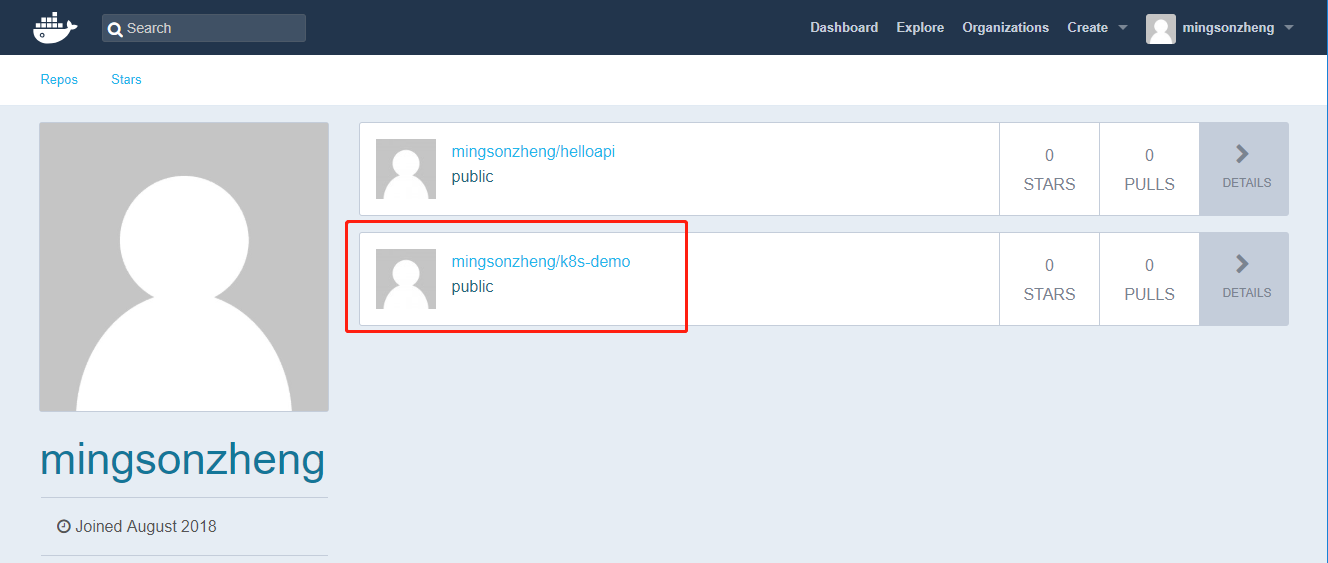
快速部署 k8s-demo
PS D:jessetalkk8sk8s-demo> kubectl create -f deploy.yaml
service "k8s-demo" created
PS D:jessetalkk8sk8s-demo> kubectl get svc -n netcore
NAME TYPE CLUSTER-IP EXTERNAL-IP PORT(S) AGE
k8s-demo NodePort 10.101.30.110 <none> 80:30585/TCP 1m
根据端口号访问本地 k8s 服务:
http://127.0.0.1:30585/api/values
http://127.0.0.1:30585/api/values/1
http://127.0.0.1:30585/api/values/2
通过 dashboard 查看
PS D:jessetalkk8sk8s-demo> kubectl create -f https://raw.githubusercontent.com/kubernetes/dashboard/master/src/deploy
/recommended/kubernetes-dashboard.yaml
secret "kubernetes-dashboard-certs" created
serviceaccount "kubernetes-dashboard" created
role.rbac.authorization.k8s.io "kubernetes-dashboard-minimal" created
rolebinding.rbac.authorization.k8s.io "kubernetes-dashboard-minimal" created
deployment.apps "kubernetes-dashboard" created
service "kubernetes-dashboard" created
启动代理
PS D:jessetalkk8sk8s-demo> kubectl proxy
Starting to serve on 127.0.0.1:8001
切换命名空间 netcore,可以看到部署的 k8s-demo

点击容器组,选择一个容器组,点击日志按钮查看日志
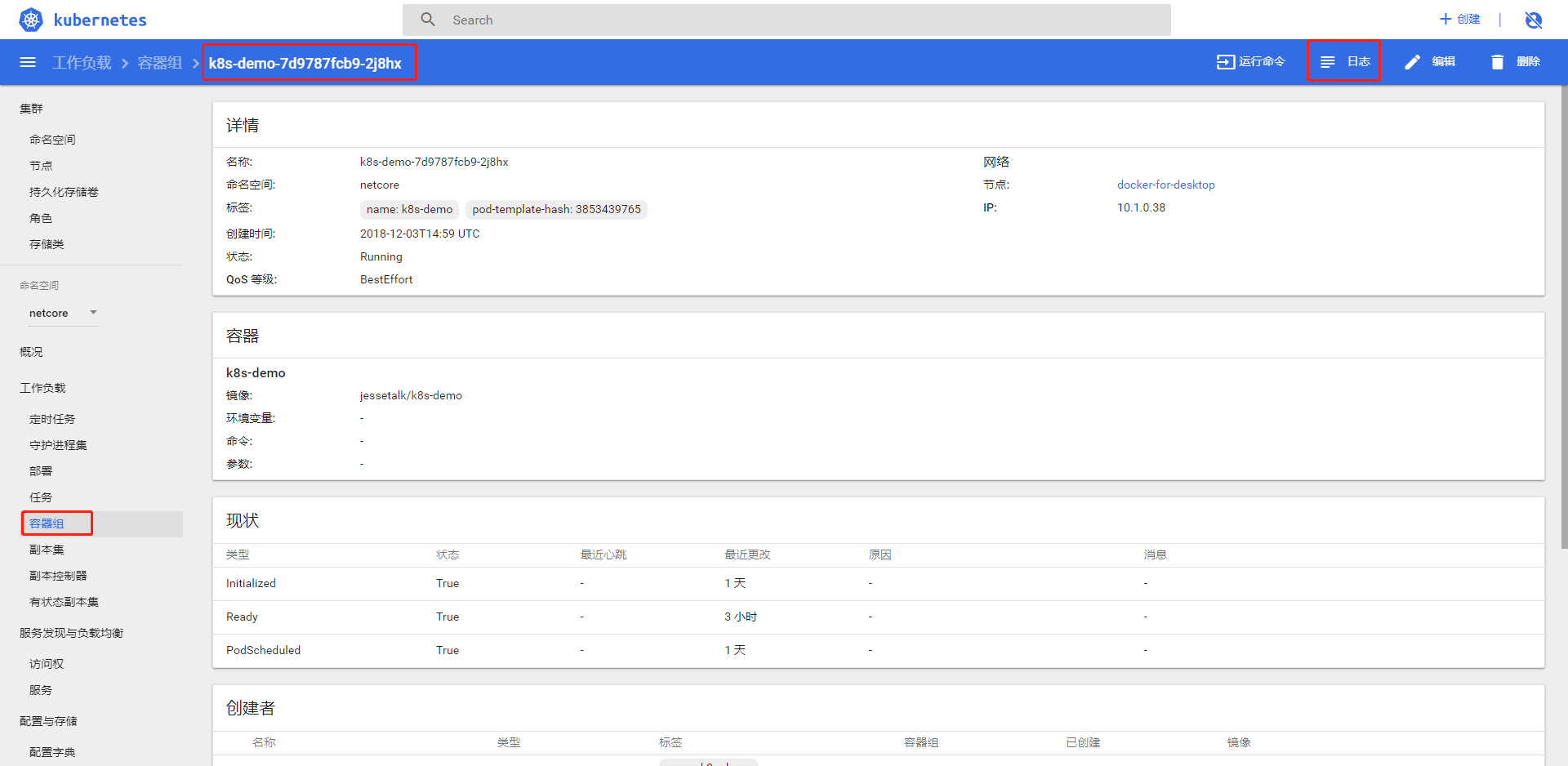
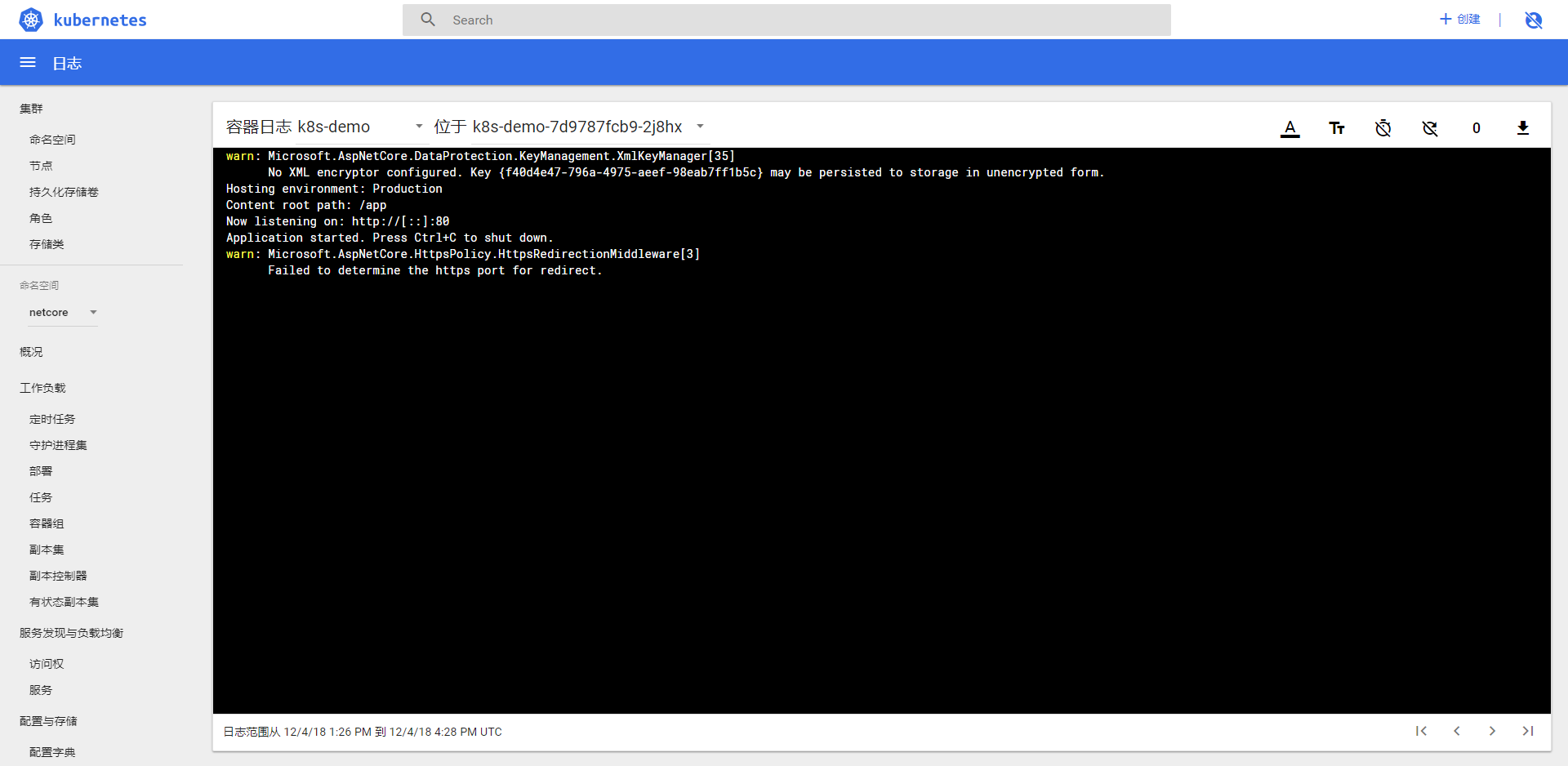
点击运行命令进入 docker 的命令行
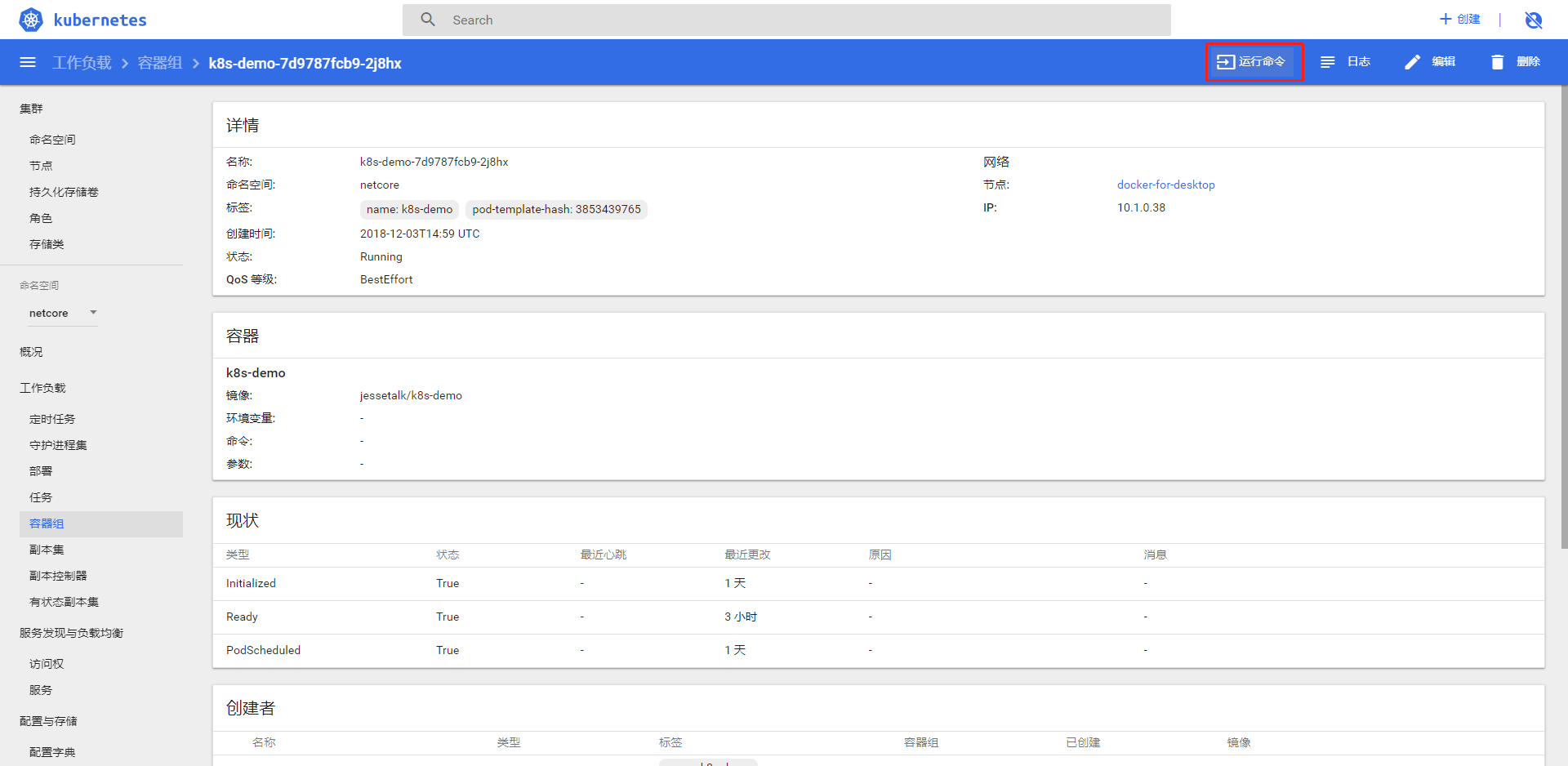
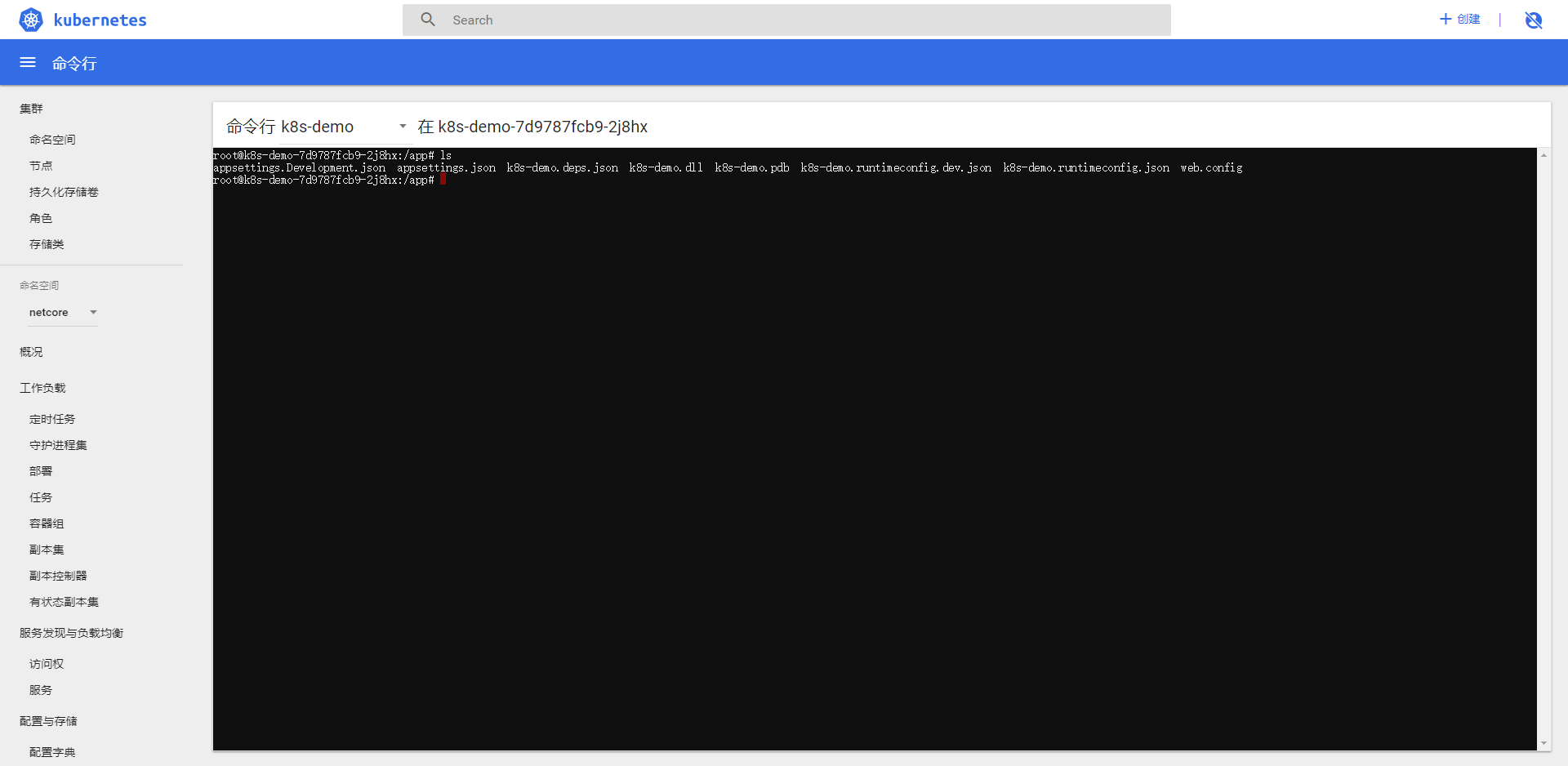
11-k8s高可用集群介绍
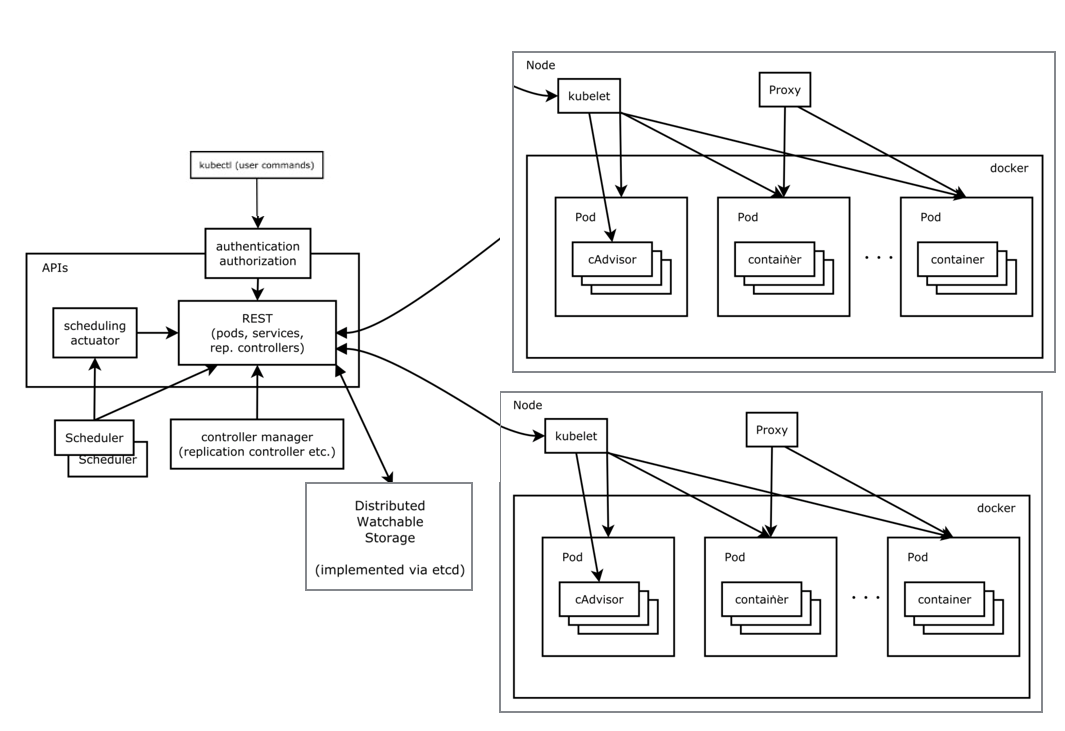
- 一个集群分为多个 Node (worker节点),左侧为 master 节点
- 每个节点上安装一个 kubelet ,与 docker 交互,负责每个 Pod 的创建、删除等
- 外部 service 访问通过 Proxy
- k8s 所有资源,数据存储在分布式数据库 etcd
- Scheduler 负责资源调度,根据 Node 负载情况选择 Node 分配任务
k8s 核心组件
- etcd 保存了整个集群的状态;
- api server 提供了资源操作的唯一入口,并提供认证、授权、访问控制、API注册和发现等机制;
- controller manager 负责维护集群的状态,比如故障检测、自动扩展、滚动更新等;
- scheduler 负责资源的调度,按照预定的调度策略将Pod调度到相应的机器上;
- kubelet 负责维护容器的生命周期,同时也负责Volume(CVI)和网络(CNI)的管理;
- container runtime 负责镜像管理以及Pod和容器的真正运行(CRI);
- kube-proxy 负责为Service提供cluster内部的服务发现和负载均衡;
k8s 调度过程
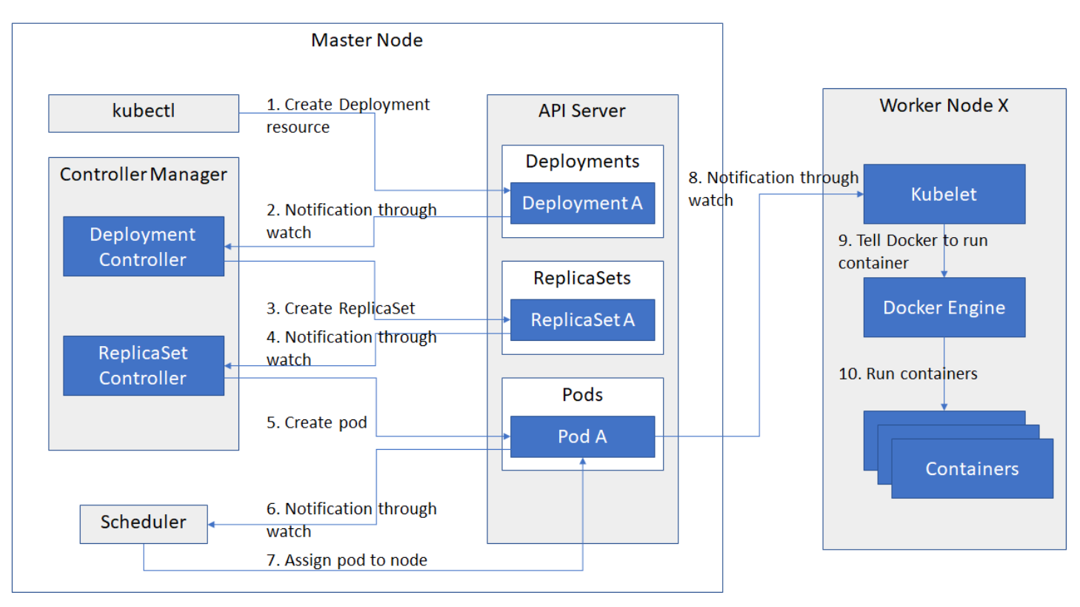
- API Server 异步请求
- ReplicaSets 副本管理
- 所有数据保存在 etcd
- 如果 MasterNode 出现问题,整个集群会挂掉
k8s 高可用集群
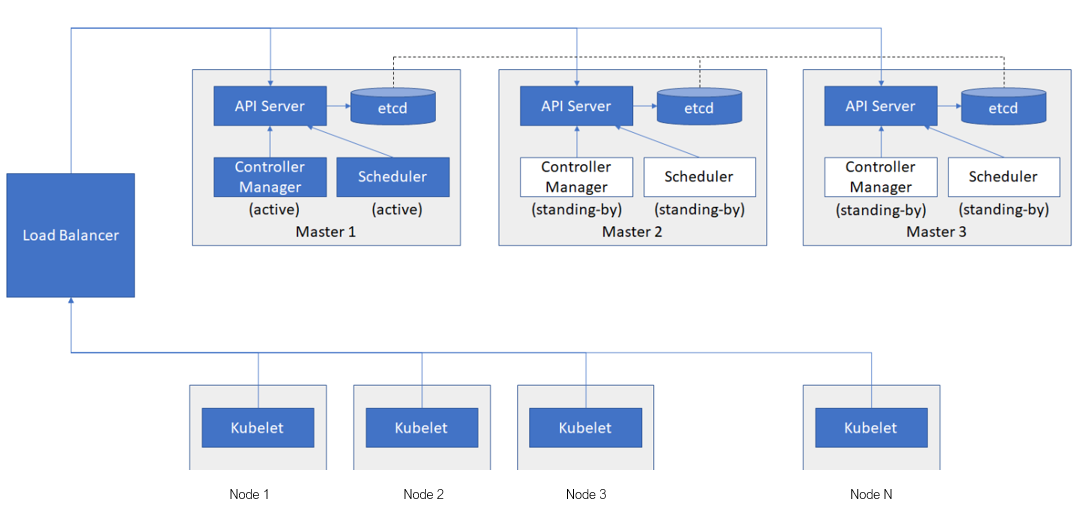
- 一般需要3台 MasterNode,Node 最多25台(与 IP 地址限制有关)
- etcd 数据库会进行数据同步,通过选举算法选举 leader
12-进阶介绍
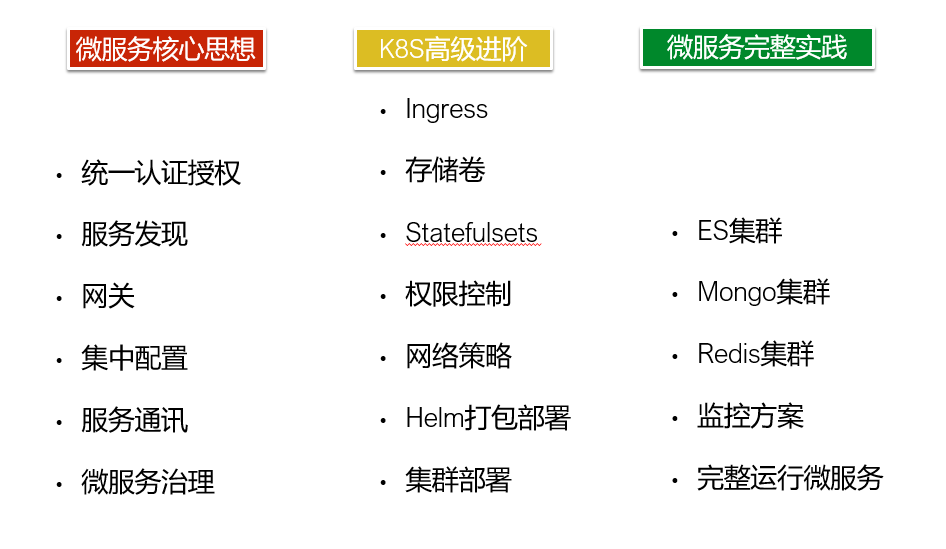

本作品采用知识共享署名-非商业性使用-相同方式共享 4.0 国际许可协议进行许可。
欢迎转载、使用、重新发布,但务必保留文章署名 郑子铭 (包含链接: http://www.cnblogs.com/MingsonZheng/ ),不得用于商业目的,基于本文修改后的作品务必以相同的许可发布。
如有任何疑问,请与我联系 (MingsonZheng@outlook.com) 。
